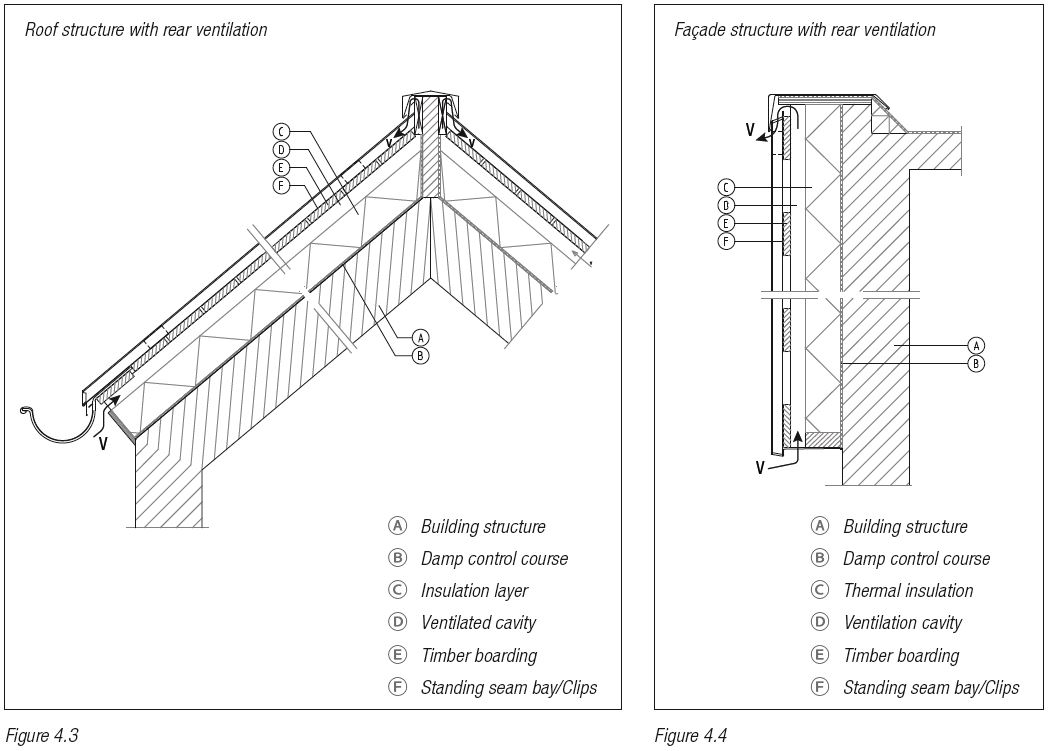Ventilated construction
The quality and service life of a roof or façade covering made of titanium zinc depends firstly on the design and execution of the roof. If the roof or façade is not constructed properly, condensation or frost will be formed on the backside of the titanium zinc.
In principle, the construction of a roof with a titanium zinc covering is, in building physics terms, the same as that of a façade. Therefore, this chapter exclusively concerns roof constructions with a slope of between 3° and 90°.
Flat or almost flat roofs with a pitch of less than 3° should, if possible, not be covered with titanium zinc unless the surface area is smaller than 15 m², for example over dormer windows and canopy roofs.

The components are identified from inside to outside:
1. Ceiling – any type, although it must be able to support the insulating material, or have the insulation attached to it.
2. Damp control course made of metal or plastic film.
3. Supporting rafters – generally made of wood.
4. Insulation slabs, matting or foam between the rafters. It is even better if they can be made to run across under the rafters, although a different construction is required for this. The thickness of the insulating layer depends on the material used and the degree of insulation required.
5. Ventilated cavity: thickness depends on pitch of roof (see table 4.1).
6. Timber boarding: If titanium zinc is to be used, the preferred type of timber is unplaned, untreated boards no less than 22 mm thick. The boards should be arranged horizontally without tongue and groove, and there should be a 5 mm gap between the boards.
• roof pitch up to 45° 5 – 10 mm
• roof pitch from 45° – 70° 5 – 50 mm
• roof pitch from 70° – 90° 5 – 100 mm
Assemble the wooden parts in such a way that the clips can be arranged at the desired location.
The nail heads must be well sunk to prevent contact with the zinc.
Use thermally galvanised nails with a zinc layer thickness of at least 20 microns or stainless steel.
7. NedZink titanium zinc in the form of the chosen roofing type. The principal options are:
• the standing seam system
• the roll cap system
• the lozenge system
Standard built up: Ventilated cavity and timber boarding

Alternative built up: Breather membrane, plywood and NedZink Pro-Tec

Alternative built up: Breather membrane, plywood, structured underlay and standard NedZink
